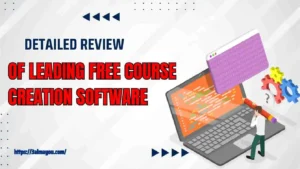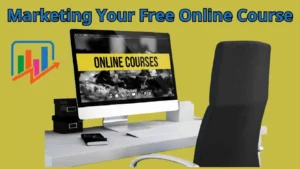Start Your First Free Online Course Creator in 2024

Introduction to Free Online Course Creator in 2024
Ready to dive into the world of online education? With the rise of e-learning, creating free online courses has never been easier or more accessible. In 2024, the tools and software available enable you to create, customize, and launch your first online course without spending a dime. Let’s explore how you can make this happen!
Let’s agree that course builder is one of the ways to make money online, so you should understand the tips in this article well
Why Create Online Courses?
Creating online courses opens up a world of opportunities. Whether you’re an educator, entrepreneur, or hobbyist, online courses can help you reach a global audience, share your knowledge, and even generate income.
Benefits of Online Courses for Educators
For educators, online courses offer the flexibility to teach from anywhere, the ability to reach more students, and the potential for passive income. Imagine creating a course once and having it benefit students for years to come!
Advantages for Learners
Learners benefit from the convenience of accessing course material anytime, anywhere. They can learn at their own pace, revisit difficult concepts, and choose from a wide variety of subjects tailored to their interests.
Expanding Your Reach Globally
Online courses break down geographical barriers. You can connect with students from around the world, expanding your influence and creating a diverse learning community.
Getting Started with Free Online Course Creators
Understanding the Basics
Before you start, it’s crucial to understand the basics of course creation. This includes knowing your audience, defining your objectives, and planning your course content.
Essential Features to Look For
When choosing a free online course creator, look for features like ease of use, customization options, multimedia support, and integration with other tools. These features will make your online course process smoother and more effective.
Setting Clear Goals for Your Course
Set clear, achievable goals for your course. What do you want your students to learn? How will you measure their success? Having clear goals will help you stay focused and create a more structured course.
Top Free Software for Creating Online Courses

Overview of Popular Free Tools
There are several excellent free tools available for creating online courses. These include Thinkific, Google Classroom, and Udemy, each offering unique features and benefits.
Comparing Features and Capabilities
Compare the features of different tools to find the one that best fits your needs. Consider factors like user interface, customization options, and support for multimedia content.
Selecting the Right Tool for Your Needs
Select the tool that aligns with your course goals and teaching style. If you’re new to course creation, choose a platform with a user-friendly interface and comprehensive support resources.
Detailed Review of Leading Free Course Creation Software

Tool 1: Comprehensive Guide and Features
Thinkific is an all-in-one platform that enables you to create and sell online courses. With a free plan, you can create a course, build a course landing page, and enroll students without any upfront costs.
Tool 2: Key Benefits and User Experience
Google Classroom offers a seamless experience for creating and managing courses, especially for educators. It integrates well with other Google tools, making it easy to share course materials and communicate with students.
Tool 3: Unique Selling Points and Limitations
Udemy allows you to create courses for free and reach a large audience. However, there are some limitations in terms of customization and course pricing flexibility.
Step-by-Step Guide to Using Free Course Creators

Initial Setup and Account Creation
Start by setting up your account and custom domain on your chosen platform. This usually involves providing some basic information and agreeing to the platform’s terms of service.
Navigating the Dashboard and Interface
Once your account is set up, familiarize yourself with the platform’s dashboard and interface. Most platforms offer tutorials or guides to help you get started learning management.


